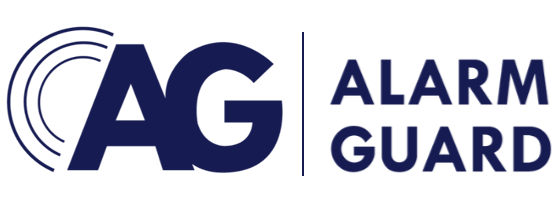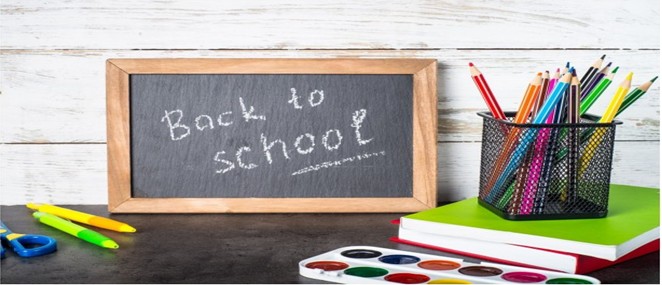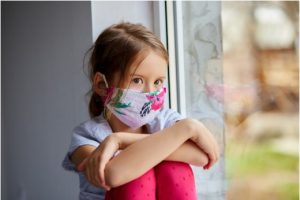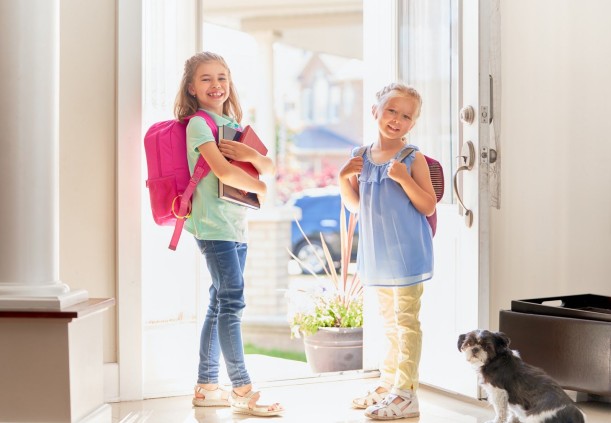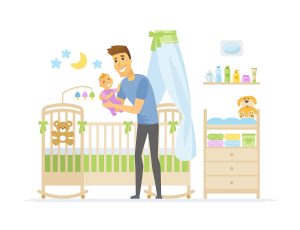“Back To School” or Back to Reality
Are Your Children Prepared Mentally, Physically & Emotionally ?
This year is completely different from previous years for kids returning to school. Due to the pandemic and cautionary measures set out by the government, our kids are in for a tremendous change. What was once a safe and relaxed environment has quickly taken a turn from the scare of COVID19. The soon realization of the need of social distancing in schools will quickly send students into a social shock. Well, at least for the children that have opted out of learning online from the comfort of their home.
For the safety of the students and their families that they will be returning to everyday, the school board has implemented some safety measures that will reduce the chances for contact or transmission of the corona virus. But before the school year can begin the following must be adhered to.
Training
School staff should be provided with a full day of training on the health and safety protocols and required adaptations before the school year begins. This training will be provided to all staff including supply/occasional teachers and casual workers, which the government has invested $10 million to provide.
Joint Health and Safety Committees
Joint Health and Safety Committees are required to be established, engaged and meeting regularly to inform the reopening plan and ongoing operations.
Adapted school environment
Schools should develop school arrival and departure procedures that support physical
distancing where possible. Approaches may include:
- staggered bell times
- maximizing the use of all possible entrances/exits to support the beginning and end of the school days
Hand sanitizer should be available in school entrances and exits and in classrooms.
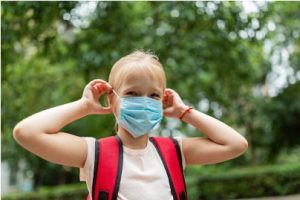 Schools should create designated routes for students to get to and from classrooms, including different and separate entrance points for students in different grades. Schools should also provide visual cues/physical guides, such as tape on floors or sidewalks and signs/posters on walls, to guide appropriate distances in lines/queues and at other times (for example, guides for creating “one-way routes” in hallways).
Schools should create designated routes for students to get to and from classrooms, including different and separate entrance points for students in different grades. Schools should also provide visual cues/physical guides, such as tape on floors or sidewalks and signs/posters on walls, to guide appropriate distances in lines/queues and at other times (for example, guides for creating “one-way routes” in hallways).
Periods of student movement should be staggered to limit student congregation in the hallways.
Congregation of teachers/staff should be limited to minimize potential for adult-to-adult transmission.
Special consideration for physical distancing should be taken for classrooms with fixed equipment (for example, Science labs or technological education classrooms).
Cleaning standards and protocols
Cleaning protocols
School boards should review their cleaning protocols and reinforce them if needed to meet current public health requirements. All school’s are referred to Public Health Ontario’s Environmental Cleaning fact sheet (PDF). Refer to Health Canada’s Hard-surface disinfectants and hand sanitizers (COVID-19) for approved products.
Cleaning products: Products that provide both the cleaning and disinfection action are preferable due to ease of use (for example, hydrogen peroxide products). Only use cleaning and disinfectant products that have a Drug Identification Number (DIN). Check the expiry date of the agents prior to use. These should be used according to the
manufacturer’s instructions.
Cleaning program: School boards should develop a program for cleaning and disinfecting schools, including reviews of:
-
existing practices to determine where enhancements might be made, including frequency and timing of cleaning and disinfection, areas to clean and/or disinfect, choice of cleaning products, child safety, staffing, signage, and PPE for cleaning staff.
-
Inventory to determine items to be stored, moved, or removed altogether to reduce handling or the challenges associated with cleaning them (for example, porous or soft items such as stuffed toys, area rugs, fabric upholstered seating)
High touch surfaces: Cleaning plus disinfection twice daily is suggested at a minimum, however, more frequent cleaning and disinfection may be necessary, depending on the frequency of use and extent of soilage.
-
includes washrooms (for example, toilet fixtures, faucets), eating areas (for example, tables, sinks, countertops), doorknobs, light switches, handles, desks, phones, keyboards, touch screens, push buttons, handrails, computers, photocopiers, sports equipment
Outdoor surfaces: Routine cleaning of surfaces on playgrounds, including high touch surfaces made of plastic or metal requires soap and water but not disinfectant. Cleaning of wooden surfaces is not recommended.
Where an individual is suspected of having COVID-19 at school:
- Establish a protocol for identification and communication of suspected/confirmed cases to administration and relevant staff to determine contaminated areas and carry out cleaning and disinfection, including timing, return to use, methods, PPE, waste disposal.
- Identify areas that may require cleaning plus disinfection (items used by the individual and all surfaces within 2 metres of the ill person) versus cleaning alone (such as a hallway or room where the individual has passed through).
- Use disposable cleaning equipment, such as disposable wipes, where possible
- Remove all items that cannot be cleaned (paper, books, etc.) and store them in a
sealed container for a minimum of 7 days.
Water testing: Schools are required to follow all Ministry of Environment, Conservation and Parks requirements and procedures regarding water flushing in advance of schools reopening.
Bathrooms: Schools should ensure that bathrooms are cleaned frequently and that there is an adequate supply of soap at all times. Paper hand towels are preferable to hand dryers. Schools should timetable bathroom breaks in the school day to stagger use of bathrooms and should monitor physical distancing. Signage should be posted that indicates the maximum number of people simultaneously using the bathroom at any given point. Individual students should not be prevented from accessing bathrooms as needed.
Isolation room: All schools have a room that can be used should a student or staff member become ill, including PPE available in the room.
These rooms should be cleaned after each use.
Lunch/food service: To the greatest extent possible, students should be encouraged to eat lunch in their
classroom with their cohort to ensure chances of contact and transmission are
minimized.
Lunch times should be staggered to allow students to wash hands before eating, without creating congestion in washrooms or handwashing stations.
If weather permits, consideration could be given to having lunch breaks outside.
With respect to eating and drinking at school, it is expected that:
Staff and students will perform proper hand hygiene before and after eating.
- Each student will have their own individual meal or snack with no common food items.
- Each student will be required to bring their own drink bottle that is labeled, kept with them during the day and not shared.
- Water bottles will be required to be filled rather than students and staff drinking directly from the mouthpiece of water fountains.
- Schools will remove all self-serving food items and microwave use will not be permitted.
- Multi-use utensils will be cleaned after each use.
- Schools will not plan non-instructional activities that involve students in preparing or serving food.
- Third party food services, including nutrition programs, will be delivered in a way that any student who wishes to participate can do so. “Grab and Go format” is preferred. All surfaces, bins and containers for food should be disinfected prior to and after each use.
Rules for personal belongings
Personal belongings brought to school should be minimized. Personal items being brought to school (for example, backpack, clothing, sun protection, water bottles, food) should be labeled and stored separately in cubbies/designated areas or lockers.
The Cost For Investing In Our Children
The Ontario government is supporting the reopening of schools through $309 million in funding for a range of investments, including:
- Up to 500 public health nurses, phased in to assist schools and boards in local health protocols – $50M
- Masks and personal protective equipment – $60M
- Additional teaching positions – $30M
- Additional school custodians and enhanced cleaning supplies – $75M
- Cleaning for school buses and personal protective equipment for bus drivers – $40M
- Additional supports for students with special education needs – $10M
- Additional health and safety training for school-based staff – $10M
- Increased funding for mental health supports – $10M
- Testing – $23.6M
This funding is in addition to the $25 million investment in mental health and technology, which will see an additional $10 million dedicated to mental health staff, resources, and programs; $15 million in technology funding to support the procurement of up to 35,000 devices for Ontario’s students to support their synchronous learning in-school and beyond; and $4 million in funding for cleaning, cleaning protocols, and financial support to hire additional custodial staff.
Alarm Guard Security is honoured to be a business in Canada with head office located in North York, Ontario. We fully support the government’s decision to heavily invest in our children’s education and safety, the continuation of our school boards and online education.
We understand with school starting this week many families will need to adjust for the teenagers staying home and working online. Some parents may also work from home but many may be required to return to work depending on their field. No matter if your child returns to school or stays home, for many families there may be a short time where the schedules may not line up leaving the child home alone.
Home Safety To Think About
Alarm Guard Security Recommends These Top Safety Tips:
- Ensure all smoke and Carbon monoxide detectors are on and working. Check to ensure they are not expired. If so contact us for help…
- Test your home security system and update your families user codes for the keypad. Check signals to your monitoring station. Need help with a security system ? Contact the pros in home security here
- Test all doors, windows and locks for your home. Your entry / exit points are the most vulnerable when they are not working. Check frequently for safety.
- Update your emergency contacts.. With your alarm company, your children’s schools and your work. If something happens to you then your work should know who to contact.
- Create some kind of notifications for when your children are home from school. With daily check ins and notifications you can rest at ease and have peace of mind. This can be achieved manually by a person or easily through a videocamera setup by your local security and home automation company.
- Turn on location based apps for your children’s phone. Keep informed and know exactly where your children are at all times.
- Find out your child’s circle of friends information. Knowing who they are with is as important as where they are. Full names and phone numbers are best.
A special thanks to the Government of Ontario website where much of the resources was received from for the back to school guidelines. https://www.ontario.ca/page/guide-reopening-ontarios-schools#section-17
